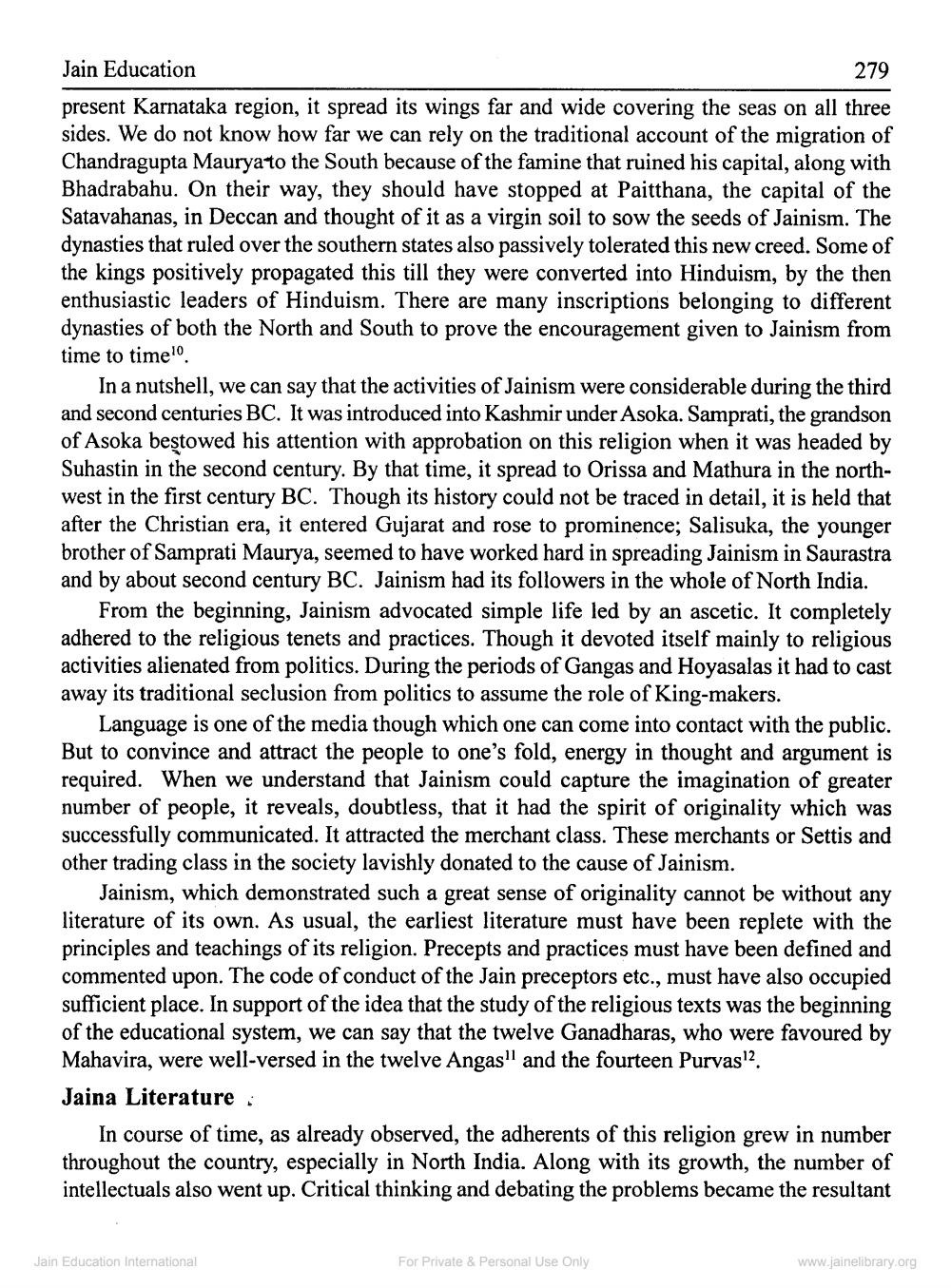________________
Jain Education
279
present Karnataka region, it spread its wings far and wide covering the seas on all three sides. We do not know how far we can rely on the traditional account of the migration of Chandragupta Maurya to the South because of the famine that ruined his capital, along with Bhadrabahu. On their way, they should have stopped at Paitthana, the capital of the Satavahanas, in Deccan and thought of it as a virgin soil to sow the seeds of Jainism. The dynasties that ruled over the southern states also passively tolerated this new creed. Some of the kings positively propagated this till they were converted into Hinduism, by the then enthusiastic leaders of Hinduism. There are many inscriptions belonging to different dynasties of both the North and South to prove the encouragement given to Jainism from time to time10.
In a nutshell, we can say that the activities of Jainism were considerable during the third and second centuries BC. It was introduced into Kashmir under Asoka. Samprati, the grandson of Asoka bestowed his attention with approbation on this religion when it was headed by Suhastin in the second century. By that time, it spread to Orissa and Mathura in the northwest in the first century BC. Though its history could not be traced in detail, it is held that after the Christian era, it entered Gujarat and rose to prominence; Salisuka, the younger brother of Samprati Maurya, seemed to have worked hard in spreading Jainism in Saurastra and by about second century BC. Jainism had its followers in the whole of North India.
From the beginning, Jainism advocated simple life led by an ascetic. It completely adhered to the religious tenets and practices. Though it devoted itself mainly to religious activities alienated from politics. During the periods of Gangas and Hoyasalas it had to cast away its traditional seclusion from politics to assume the role of King-makers.
Language is one of the media though which one can come into contact with the public. But to convince and attract the people to one's fold, energy in thought and argument is required. When we understand that Jainism could capture the imagination of greater number of people, it reveals, doubtless, that it had the spirit of originality which was successfully communicated. It attracted the merchant class. These merchants or Settis and other trading class in the society lavishly donated to the cause of Jainism.
Jainism, which demonstrated such a great sense of originality cannot be without any literature of its own. As usual, the earliest literature must have been replete with the principles and teachings of its religion. Precepts and practices must have been defined and commented upon. The code of conduct of the Jain preceptors etc., must have also occupied sufficient place. In support of the idea that the study of the religious texts was the beginning of the educational system, we can say that the twelve Ganadharas, who were favoured by Mahavira, were well-versed in the twelve Angas11 and the fourteen Purvas12.
Jaina Literature.
In course of time, as already observed, the adherents of this religion grew in number throughout the country, especially in North India. Along with its growth, the number of intellectuals also went up. Critical thinking and debating the problems became the resultant
Jain Education International
For Private & Personal Use Only
www.jainelibrary.org




